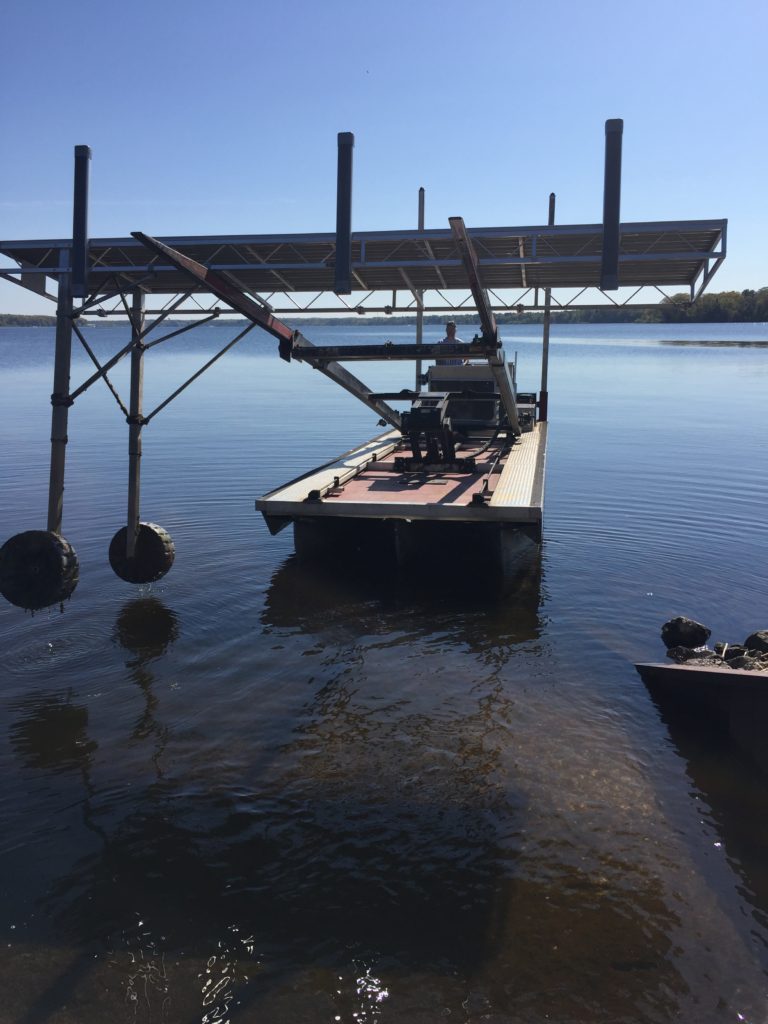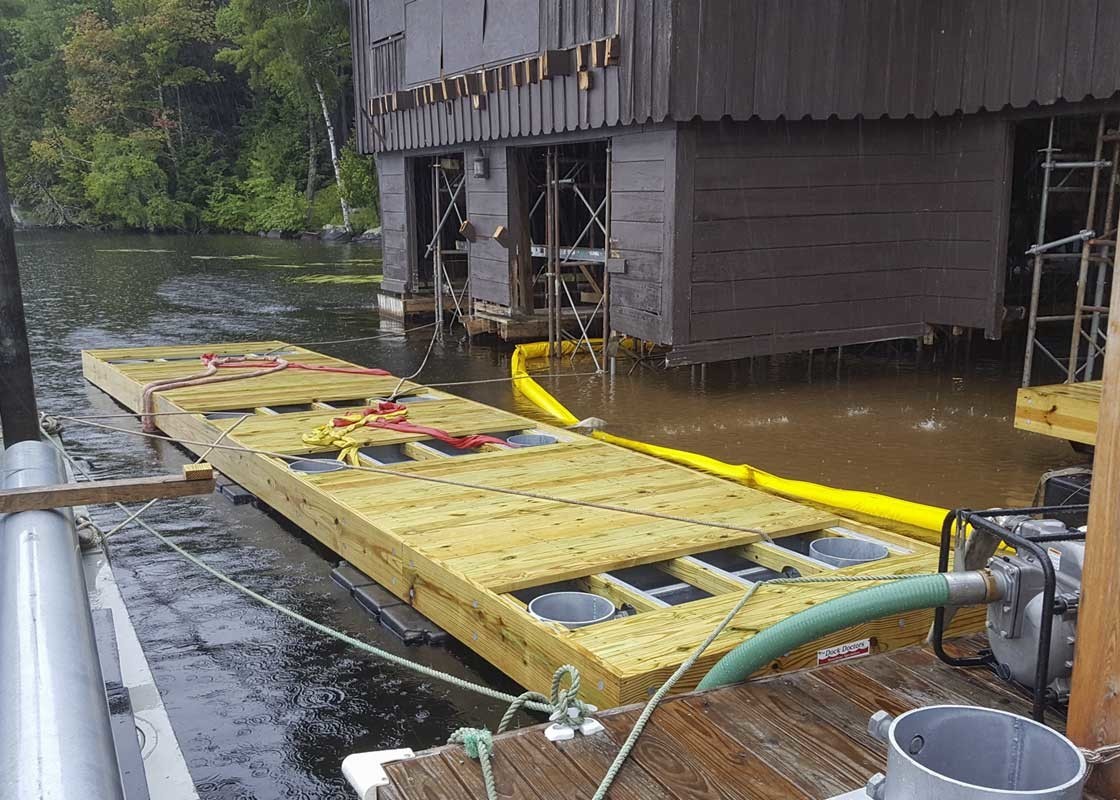Why Normal Upkeep Can Minimize Future Dock Repairs
Why Normal Upkeep Can Minimize Future Dock Repairs
Blog Article
Reliable Dock Repair Service Techniques: Making Sure Architectural Stability
Guaranteeing the structural integrity of docks through efficient repair service techniques is critical for the durability and safety of aquatic facilities. This involves a multi-faceted approach starting with extensive inspections using sophisticated modern technologies like sonar devices and remotely operated vehicles (ROVs) to spot both visible and hid damages. Consequently, picking the ideal fixing materials, such as composite products and corrosion-resistant alloys, is essential for resilience. Architectural support techniques, including the implementation of cross-bracing systems and load-distribution plates, play a crucial function in mitigating anxiety factors. Nevertheless, the importance of these methods comes to be noticeable when discovering innovative repair methods and preventative upkeep strategies.
Analyzing Dock Damage
Assessing dock damage is an essential initial step in making sure the architectural integrity and security of any kind of docking facility. Secret elements to take a look at consist of the dock's structure, pilings, decking, and equipment (Dock Repairs).
Architectural designers or certified inspectors generally perform these analyses making use of specialized tools and methods. For example, underwater inspections may employ finder equipment or from another location ran vehicles (ROVs) to detect submerged damages. Above water, aesthetic evaluations are complemented by utilizing moisture meters and various other diagnostic devices to uncover underlying problems not quickly noticeable to the nude eye.

Deciding On Fixing Products
Choosing the proper repair materials is an essential action in the dock restoration process, one that directly influences the durability and performance of the fixed framework. Product selection have to be driven by aspects such as ecological problems, load-bearing demands, and compatibility with existing dock elements. Wood is a typical choice for docks due to its natural resilience and aesthetic allure. However, choosing the appropriate kind of wood, such as pressure-treated lumber or naturally rot-resistant types like cedar or teak, is essential to endure water settings.
In addition to wood, composite materials are progressively prominent because of their sturdiness and reduced upkeep requirements. Compounds, normally made from a blend of plastic and wood fibers, provide excellent resistance to rot, pests, and UV damage. For steel anchors, choosing corrosion-resistant alloys such as galvanized steel or marine-grade aluminum is necessary to protect against corrosion and make sure structural integrity in saline water conditions.
Epoxy materials and marine-grade sealants are crucial for fixing cracks and sealing joints, giving a water-proof barrier and boosting the dock's total toughness. By carefully selecting top notch products, dock fixings can achieve resilient outcomes, therefore protecting versus future destruction and making sure safe, dependable usage.
Architectural Support Techniques
Efficient structural support strategies are crucial in ensuring the security and longevity of dock fixings. One fundamental technique involves using steel or composite support bars (rebar) within concrete frameworks. Rebar provides added tensile toughness, avoiding cracks and dispersing tons much more evenly. This approach is specifically reliable for docks exposed to hefty lots or harsh ecological problems.
Another important method is the application news of fiber-reinforced polymers (FRP) These materials supply high strength-to-weight ratios and exceptional resistance to rust, making them perfect for strengthening concrete or wood docks. FRP can be used in sheets or strips and bound with epoxy materials to enhance architectural integrity.
Bracing and securing systems likewise play an important role in architectural reinforcement. Cross-bracing, using steel or wood beams, can combat side pressures, minimizing swaying and activity. Anchoring systems, such as helical piers or driven stacks, provide a stable foundation by moving tons to deeper, a lot more secure dirt layers.
Last but not least, the integration of load-distribution plates can assist distribute weight much more equally throughout the dock's surface area, mitigating localized tension factors. These techniques jointly make sure that docks continue to be safe and durable, qualified Your Domain Name of enduring the rigors of their operational environment.
Advanced Fixing Approaches

An additional innovative technique includes undersea welding, which enables for fixings to be conducted without the demand to dewater the location. This technique is especially useful for dealing with structural concerns in immersed dock elements, guaranteeing very little disturbance to procedures. Enhanced welding methods, combined with robotic systems, supply precision and integrity, therefore prolonging the life-span of the dock.
Furthermore, cathodic defense systems are implemented to stop deterioration in metal dock frameworks. By utilizing sacrificial anodes or pleased current systems, these strategies properly reduce the electrochemical procedures that cause product deterioration.
Finally, progressed monitoring modern technologies, such as architectural wellness monitoring (SHM) systems, supply real-time information on the problem of dock structures. These systems make it possible for proactive upkeep and timely interventions, inevitably making sure the long-term structural stability of the dock.
Upkeep and Prevention
Maintenance and avoidance are fundamental principles that underpin the longevity and safety and security of dock frameworks. Normal examinations are paramount, allowing for very early discovery of deterioration, potential weak points, and ecological influences. A proactive approach, involving routine checks for rust, rot, and architectural changes, minimizes pricey repairs and extends the dock's functional life.
Safety nets need to include using protective coatings to metal parts to defend against corrosion and using cured timber to withstand decay. In addition, ensuring proper drain and ventilation can prevent water buildup, which is a typical source of structural degradation. Incorporating top quality products and adhering to manufacturer standards throughout building and construction and repair work phases likewise play crucial roles in improving longevity.

Educating workers in dock upkeep ideal practices makes certain constant application of safety nets. Leveraging technological developments, such as drones for assessments and sensing units for real-time surveillance, can better improve upkeep efforts. By focusing on maintenance and avoidance, dock proprietors can guarantee architectural integrity, operational security, and cost-efficient administration over the dock's life-span.
Verdict
In final thought, maintaining the structural stability of aquatic centers website here necessitates detailed dock fixing techniques. Advanced repair service strategies, coupled with routine maintenance techniques, guarantee the dock remains functional and secure under varied environmental problems.
Guaranteeing the architectural stability of anchors through reliable repair work methods is critical for the long life and safety and security of aquatic centers.Picking the ideal fixing products is a crucial action in the dock reconstruction procedure, one that directly influences the durability and efficiency of the fixed structure.Efficient architectural reinforcement strategies are crucial in ensuring the security and long life of dock fixings. By prioritizing maintenance and prevention, dock owners can make sure architectural honesty, functional safety and security, and cost-efficient administration over the dock's lifespan.
In final thought, maintaining the architectural integrity of marine centers requires comprehensive dock fixing strategies.
Report this page